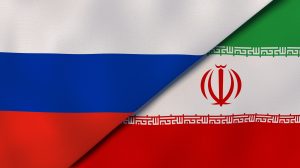Last week, Kazakhstan, Turkmenistan, and Afghanistan announced plans to build a logistics center in Herat province in western Afghanistan, according to an interview given to Reuters by the Taliban’s Minister of Trade Nuruddin Azizi. As part of this agreement, the governments of the three countries will prepare a series of official plans for the creation of a new logistics hub within two months.
The answer to the important question of who will finance this logistics hub remains elusive. The proposed hub will operate as part of the wider International North-South Transport corridor (INSTC), a 7,200 kilometer intergovernmental transport project first established in 2000 by Iran, Russia, and India. The list of participants in INSTC later expanded to 14, including Oman, Turkey, Azerbaijan, Turkmenistan, Kazakhstan, Afghanistan, and Pakistan. Ukraine is also a member, although the current conflict has put a stop to its active participation.
The starting point of the INSTC is in Russia. Freight is then transported along a series of road-rail-sea networks that are part of other continent-straddling transport projects in the region. The route largely runs through the territory of Russia, Azerbaijan, Central Asia, Afghanistan, Pakistan, India, and Iran. The logic behind the INSTC is simple. The INSTC is designed to be the shortest overland transport route and is considered as an alternative to the Suez Canal as it cuts 30 days off shipping times for goods between India and Russia.
The new logistics hub in Afghanistan will supposedly serve as a distribution channel, offloading tanks and other commodities from the road onto rail and then toward seaports in Iran, Pakistan, and India to be shipped to the Middle East and Asia-Pacific region.
Interestingly, according to the interview Azizi gave to Reuters, the hub will be used to transit Russian oil to the Middle East and Asia.
Finding new sanction-busting trade routes have become increasingly important for countries like Russia and Iran. Global events such as the Russian invasion of Ukraine in February 2022 and the Suez Canal crisis rattled global supply chains and laid bare bottlenecks and trade route vulnerabilities. As such, long-delayed transport projects like the INSTC were suddenly revitalized.
More broadly, Russia, has been eyeing up it active role in transport and other railway projects in the global south. Projects like the INSTC and the Belarus-Russia-Kazakhstan-Uzbekistan-Afghanistan transport project have taken off lately and have been getting a lot of diplomatic attention. Developing southbound trade routes is viewed by Moscow as crucial to advancing its agenda of pivoting trade relations away from the West.
Russia’s selective transit strategy is not new. After the first wave of sanctions following the invasion of Crimea in 2014, it adopted the same policy of re-routing its pipelines and energy exports through “friendly” transit states.
The INSTC offers a vital economic escape path for Moscow and Tehran as they battle sanctions. It unites multiple transport systems across various countries, with Russia and Iran being the two countries contributing the most to the infrastructure development projects, accounting for 34.6 percent and 33.7 percent of total planned investments, respectively. Kazakhstan has a 16.5 percent share of investment in the INSTC project.
Statistics reveal that in 2021, 600,000 tonnes of freight were transported along the Russia-Georgia route via Azerbaijan. In 2022, the then-first deputy prime minister of Russia, Andrei Belousov, had announced that by 2030 the volume of Russian cargo transported through the whole of the INSTC network will double from 17 million tonnes, the current level, to 32 million tonnes per year, which is the amount it would be at its full potential.
Despite this optimism and multiple dry runs, the project depends heavily on the state of affairs and infrastructure in Iran, and that’s problematic for the Kremlin. Iran is unable to finance the project, and the corridor needs large amounts of investment. Russia will therefore need to provide nearly all of the financing for roads, ports, depots, and additional infrastructure. Given the escalating situation in Ukraine and an increase in Russian military spending, the Kremlin would need to either create additional incentives for the other country members of the INSTC to loosen their purse strings or find alternatives sources of money.
A month prior to the announcement of the abovementioned dry port project in Herat, the United States had signaled a shift in its stance on Afghanistan. In March 2024 Karen Decker, chargé d’affaires of the U.S. mission to Afghanistan, said Washington has “acknowledged the need for engagement over isolation of Afghanistan.” Also, the United Kingdom has been re-engaging with Central Asia as demonstrated in the recent trip by the U.K. Foreign Secretary David Cameron.
Thus, there has been a recent change in discourse by the West and their strategy is taking a more proactive and engaged direction. The Afghan issue is slowly getting re-introduced into the international foreign policy agenda as the world adapts to a new reality.
Western policymakers have been mulling over Afghanistan for a while now. But as they try and wrap their mind over how best to proceed, Russia has already made advances. These changing currents reflect shifting priorities from regional and global powers. Europe was the Kremlin’s long time economic focus, with the European Union contributing more than a third of Russia’s trade in 2020. It is worth noting that most of Russia’s supply chains are built to cater to Europe. Now, that landscape has changed. And Afghanistan is once again, brought back into the spotlight, for better or for worse.

































